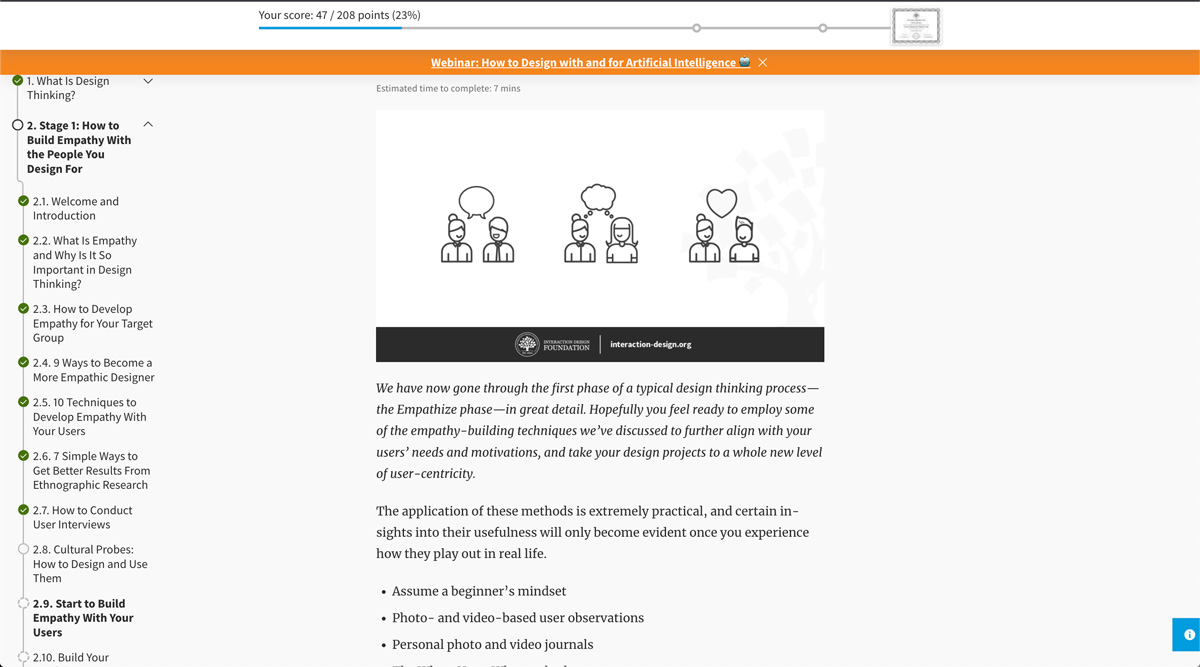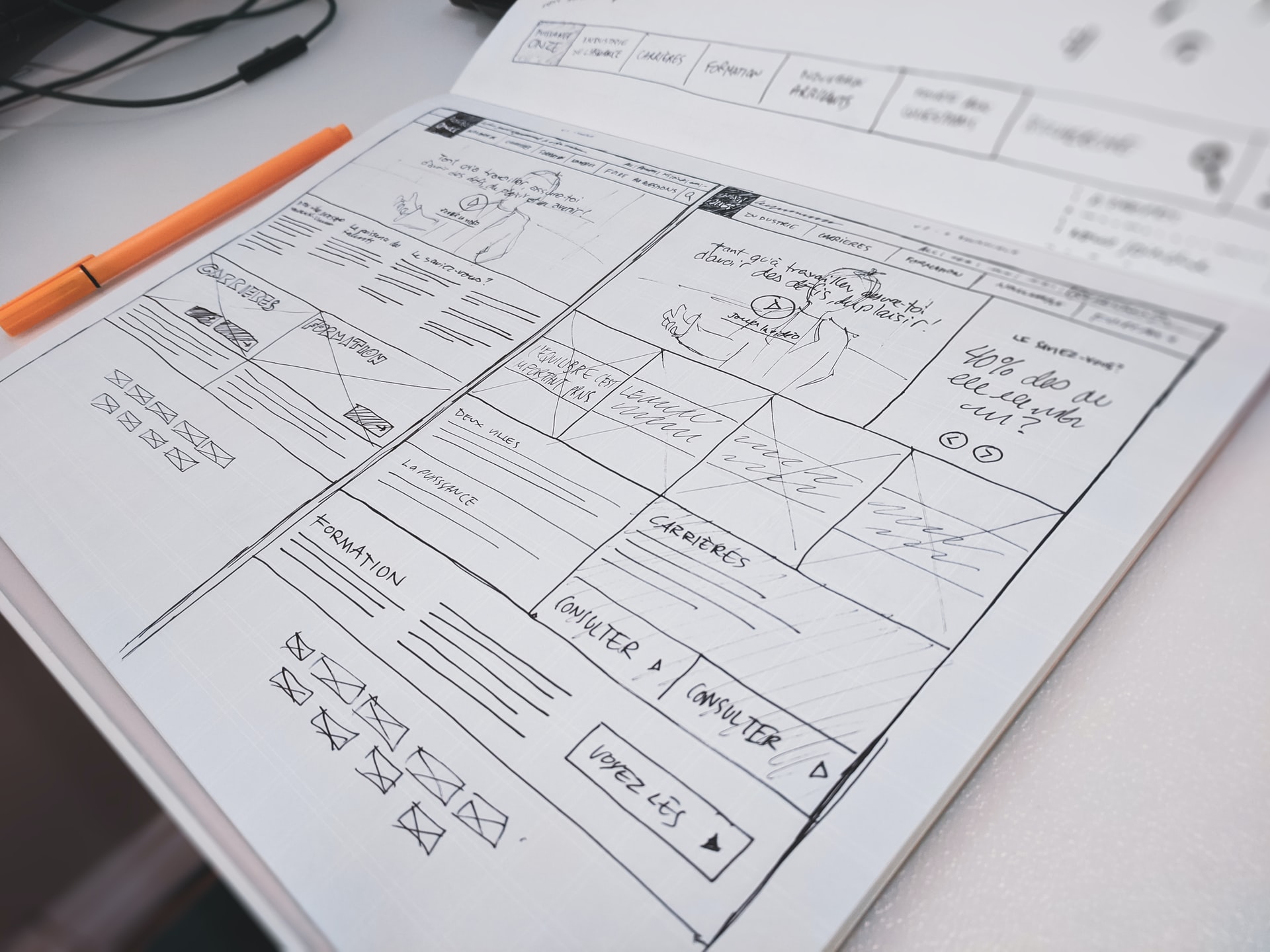During the many British lockdowns due to COVID, I knew I wanted to improve my design skillset. I had acquired over ten years of web and branding design experience but this wasn’t enough. I knew I could improve how I approached my work further by learning UX. As someone who has an interest in ‘why people do things’ and psychology; UX felt like a natural progression. I wanted to upskill myself to add that extra UX string to my bow and build better websites. I began my journey into UX by looking at various courses that I could find across the web. That is when I came across The Interaction Design Foundation. A platform that appeared to have many benefits to someone new to UX or wanting to transition. In this article, I will review my experience of the IxDF.
Who am I and why UX?

My name is John Wilson and I have been a designer for over ten years working in many different web and brand design agencies in London and Liverpool. My main focus has been websites although I have also been involved in branding. At the start of this year, I took the plunge and decided to start working freelance.
In all my working experience I realised that we didn’t tend to do much UX. There was some information architecture created by one business. Another may have done a little research on the competition and a sitemap, but that’s it. I also created wireframes and high fidelity interactive mockups using Figma for over two years. Then I decided to begin looking more deeply into UX. I wanted to create websites of the highest level and we needed UX to do that.
It is my belief to create great websites you really need to not only understand how to build a website using code but deeply understand your client’s customers’ needs. I wanted to add more UX capability to the web designs I was producing as I knew by doing this I would improve the experience not only for the user but also for the business goals of my clients.
Courses That Have Impacted Me The Most: Review Of The Interaction Design Foundation
The way the Interaction Design Foundation courses are constructed really helped in managing my learning. Lessons are released at different times so to get the most learning from each course. I particularly like the fact they divulge the lessons in different ways. One lesson may be an article about a topic with image representations to explain the topic in finer detail. Sometimes they use video, with and without a transcript. They also give plenty of PDF downloads for reference in future projects! Really useful! Occasionally they also give you an actual project task to do which is the icing on the cake.


I found the courses with actual project assignments in them the best for learning fully. The reason I raise this point is that each of us learns best in different ways.
The way I learn best is through practice. I have highly enjoyed learning about conducting usability testing and also, ‘becoming a UX designer from scratch’. Both of these courses gave projects/tasks that help you understand but also begin to build a UX portfolio. This is vital when changing professions and will help you to come up with ideas for new projects. It can also help in future projects by putting it into practice when building your own UX driven websites.
How to Stay Focused When Learning Online
There are many courses on the Interaction Design Foundation and I managed to complete five, hopefully, six, by the end of my first year of membership. This means I managed to complete one course every 2 months. Finding the time whilst holding down a full-time job and undergoing day to day tasks can be challenging. Albeit, there are ways you can find the time to undertake your learning. I have actually signed up for another 9 courses as I had hoped to try and complete one or two courses a month but I never found the time…this can be a bit of a drawback to online learning.
One of the great things about the courses at Interaction Design Foundation though, is that they don’t release the next lesson until a certain date so you don’t overload yourself with content and end up forgetting bits.
It also helps you to manage to do a couple of courses at the same time.


I think from my experience of using IxDF it is really important to become good at time management. I am a busy person who makes sure to get gym sessions at least 3 times a week. For the majority of the time, I was a member of The Interaction Design Foundation I was working full time. As you can imagine, finding the time when life demands appear can be a challenge!
For future courses, I will ensure I spend at least 30 mins, dedicating myself four times a week. This way it will be manageable chunks and not interfere with other duties in life.
Why all web designers should learn at least some UX
I believe to be a great web designer you need to have an understanding of UX. You need to care about not just crafting beautiful well-coded websites but functional ones that solve big problems. Both for the user and the business itself.
UX is vital to ensuring that the products we are making are a great experience and help to achieve business objectives and the user’s needs. What we do as web designers solve problems through communication. How can we possibly provide the best web design solution without a ‘two-way’ conversation? Plus having deep empathy for those we are creating sites for? Both the end-users and stakeholders need to be involved in the design and development of any website to ensure it’s the best it can possibly be for everyone involved.
UX knowledge and experience should be on every web designer’s CV. Learning good practice of UX alongside web design will mean that you will improve your designs tenfold. This will impress your users but also your boss!
Every course you complete gives you the opportunity to gain certifications. These you can add to your LinkedIn profile and on your CV for future UX work. You can even get ‘best in class’ if you achieve over 90% grade on your courses! See below for an example of one of my certificates.


Conclusion Review Of The Interaction Design Foundation
In conclusion to my review of the Interaction Design Foundation, I believe being a member has really benefited me professionally. I believe I am now becoming a more complete web designer/developer with UX knowledge. One of my biggest takeaways from being a member so far is creating user personas for every project. I’ve begun delving deeper into the research stage of web design. Trying to implement more user testing at the prototype stage. Even once the site is in complete development so we can see how people are using the site and how to improve it further.
If you are a web designer that feels that you want to upskill yourself in UX, or someone who may be interested in moving into a UX career then use this link to become a member of The Interaction Design Foundation Today: –

